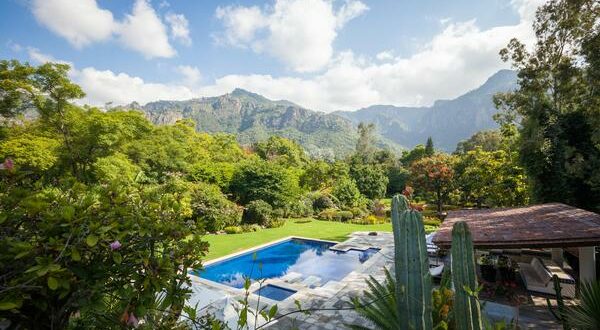[ad_1]
The Mexican state of Morelos is divided into 36 municipalities, and its capital is Cuernavaca.
The famous German naturalist, humanist, and explorer Alexander von Humboldt baptized Cuernavaca as the city of eternal spring. The nickname was so fitting that every time it was mentioned, people and even foreigners know that it is the capital of the state of Morelos.
However, the city was initially called Cuauhnáhuac, which means “next to the tree” in the Nahuatl language. However, the Spanish speakers couldn’t pronounce it accurately, so they eventually transformed the name into Cuernavaca.
Cuernavaca is about 50 miles away from Mexico City. It is among the favorite weekend destinations for Mexican capital inhabitants due to its all-year temperate climate, its vegetation, and many water parks. The city has grown such that urbanization has spread to the neighboring municipalities.
It is well known that Hernán Cortés, the Spanish conqueror, considered Cuernavaca a heavenly place, full of flowers, and commissioned to build in this city a palace that survives to the present day. The city has thus become an important historical destination full of colonial and pre-Hispanic treasures.
The charming Historical Center of “Cuerna,” as the city is affectionately short named, has the charm of a province with its colonial buildings, fountains, parks, and ravines. In its downtown, visitors will find the Cathedral, Cortés Palace, which comprises the Cuauhnahuac Museum, Borda Garden, the Government Palace, the Jardín Juarez, Chapultepec ecological park, the Amanalco ravine, the Chapel del Calvario, and the Robert Brady Museum, among other attractions.
All visitors should stop at the Plaza de Armas to breathe in its festive atmosphere and colonial charm. There, the most notable building is the Palacio de Cortés, built by the aforementioned Spanish conqueror in 1526, imitating the style of the Alcázar de Colón de Santo Domingo, in the Dominican Republic. It’s one of the oldest buildings in the country in New Spain style. Here, Cortés settled his residence after living for a period in Mexico City.
A few minutes from the Historical Center, you can visit the Teopanzolco Archaeological Zone in the Vista Hermosa neighborhood, which in Náhuatl means “place of the old temple.” This settlement initially would have been inhabited by Tlahuicas and later by Mexicas. The main pyramid is dedicated to Aztec gods Tláloc and Huitzilopochtli.
Some tourists take advantage of the short distance and visit the nearby town of Tepoztlán located in the Cerro del Tepozteco (Tepozteco Hill). Besides admiring its landscapes, visitors can experience an ancient ritual for relaxation and detoxification at a temazcal. It’s advisable to visit the Pyramid of Tepozteco and walk along the downtown area to see the Temple and former Convent of the Natividad.
[ad_2]You can read more of the news on source
 Travelsmart
Travelsmart



